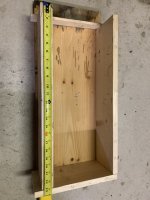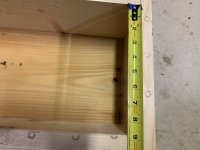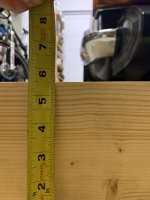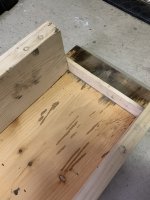KVH
Obi Wan
Offline
I'm now making a dolly to "hold" my engine until I'm ready to mate the transmission. I'm using a furniture dolly as a base, just like others have done. I'm following the threads and posts from Mike as well as others here, but I can see I need more advice. The engine block length, oil pan flange to flange, is right about 19 3/16". My main question now is whether the depth of the dolly should be an extra few inches, like 22 inches, just for comfort, with the idea that I'd just slide the engine forward a bit when I'm ready to mate the transmission, or whether I just ought to make the depth match the block length, right at 19 3/16 plus or minus. It doesn't make much difference to me, but I wanted to toss out the issue in case any of you has an idea or experience relevant to the final dimensions, problems with dimensions, etc. Thanks

 Hi Guest!
Hi Guest!

 smilie in place of the real @
smilie in place of the real @
 Pretty Please - add it to our Events forum(s) and add to the calendar! >>
Pretty Please - add it to our Events forum(s) and add to the calendar! >> 




